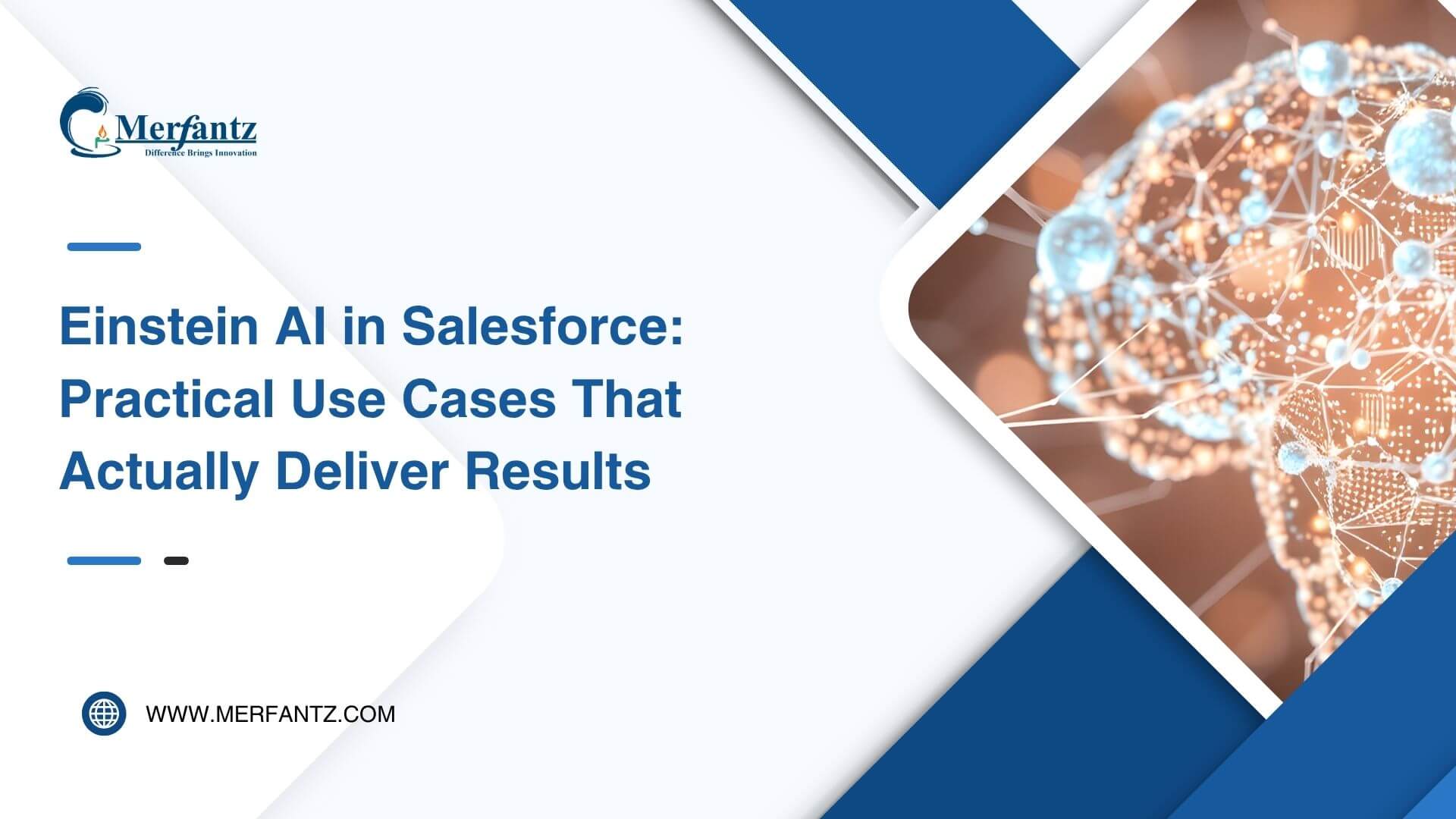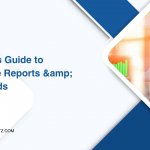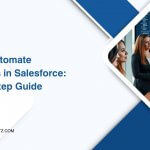
Fact: 72% of teams report faster case resolution when AI is grounded in real CRM data, not just isolated models.
I write this guide because I want you to see how salesforce einstein threads AI into daily work so teams in sales, service, marketing, and commerce get measurable outcomes. I focus on use cases that drive customer growth, higher pipeline conversion, and better campaign performance.
I summarize how the platform evolved from a GPT integration to a built-in copilot and now an Agentforce Assistant that runs pre-programmed actions in the UI. I also explain why Data Cloud matters: it unifies first- and third-party data to unlock context-rich automation and reliable insights.
Trust matters: I preview the Trust Layer that enforces dynamic grounding, data masking, toxicity controls, and zero retention from LLM partners so your privacy and compliance needs are met.
Key Takeaways
- I show practical, cloud-by-cloud use cases that map to real workflows.
- The guide links strategy to execution with an implementation playbook and adoption metrics.
- You’ll learn about assistants, Studio tools, analytics, and developer productivity.
- Examples include Sales Assistant, case classification, segment creation, and commerce goals.
- This is an evolving guide to help you plan for immediate wins and future scale.
Why I Wrote This Ultimate Guide and What You’ll Get From It
I wrote this guide to turn AI hype into clear, role-specific wins that leaders can act on this quarter. My focus is practical: translate features into measurable outcomes for sales, service, marketing, commerce, and IT without derailing existing roadmaps.
Who this guide serves
This guide helps busy leaders and their teams—from sellers who need deal support to marketers who want faster segmenting and content creation. IT and app builders get governance patterns so adoption scales safely.
How I evaluate real results
I define real results as quantifiable gains: higher conversion rates, faster resolution times, better forecast accuracy, and improved engagement. I test features against unified data, admin control, speed-to-value, and enterprise compliance.
- Actionable standards: output quality grounded in data and clear governance.
- Contextual vetting: measure time-on-task, data hygiene, response times, and CSAT.
- Blueprint, not a catalog: you’ll get a prioritized roadmap and quick-win ideas tied to user needs and content workflows.
Salesforce Einstein
I’ll map how predictive and generative AI now lives inside Customer 360 and the practical value it delivers to teams.
Predictive and generative AI embedded across Customer 360
Salesforce Einstein is an umbrella for predictive scoring, recommendations, summarization, and content generation that work inside the salesforce platform.
Predictive models drive lead and opportunity scoring, forecasts, and discovery. Generative capabilities create sales emails, service replies, and dynamic product descriptions.
Present-day landscape: from Einstein GPT to Agentforce
The journey began with GPT-powered content fused with CRM and data cloud context. It evolved into a side-panel copilot, and now the Agentforce assistant executes multi-step actions.
This assistant reduces hallucinations by pulling data-rich customer context and uses industry action libraries to speed time-to-value across sales cloud, service, marketing, and commerce.
- Native embedding leverages metadata, security, and automation admins trust.
- Predictive tools complement generative content to close the loop on insights and action.
- Part Salesforce strategy focuses on governance, extensibility, and measurable impact.
Data Cloud and the Einstein Trust Layer: The Foundation for Trusted AI
Trust starts with clean, connected data; Data Cloud is the plumbing that makes that possible. I focus on how unified profiles and a rigorous trust layer let teams run safe, useful AI without rebuilding pipelines.
Unified customer profiles via harmonized data sources
Data Cloud connects and harmonizes structured and unstructured records with a zero-copy, zero-ETL design. That reduces latency and removes brittle movement between systems.
It federates access to Redshift, BigQuery, Databricks, and Snowflake so analytics and models can run where the data lives.
Dynamic grounding, masking, and toxicity controls
The trust layer applies dynamic grounding at prompt time, supplying exact contextual records to an LLM and cutting hallucinations.
Customer-configured masking hides PII fields, while toxicity scoring and policy enforcement flag risky outputs before they reach users.
Why governance and privacy drive adoption
Executives tell me that zero-data-retention with LLM partners and audit trails stored in Data Cloud made pilots possible. Teams pilot faster when privacy is baked in.
- Zero-copy harmonization creates single customer views and less pipeline breakage.
- Dynamic grounding and vector search improve relevance for transcripts and documents.
- Masked fields, audit trails, and toxicity scores keep compliance and innovation aligned.
From Einstein GPT to Copilot to Agentforce: How the Assistant Works Within Salesforce
I describe how natural language requests become one-click operations tied to live customer data. The assistant sits in the user interface and accepts plain English prompts so a user can ask for outcomes, not steps.
Because the assistant is grounded in Data Cloud and semantic search, it pulls the right records, transcripts, and knowledge without manual hunting. That grounding keeps results relevant and reduces hallucinations.
Conversational workflows and multi-step plans
The assistant returns multi-step plans that can run automatically or wait for review. Recommended Actions surface contextually on object pages, like “summarize opportunity” or “draft follow-up,” cutting clicks and guiding best-next steps.
Copilot Analytics and extendable capabilities
Copilot Analytics gives admins dashboards for adoption, action success, and ROI. Teams use those insights to refine prompts, tune action libraries, and improve outcomes.
Admins can compose new actions that update records, start flows, and call external systems. Mobile support includes voice-to-text so field reps trigger tasks on the go.
Industry and persona accelerators
- Sales: follow-ups, forecasting guidance, and deal summaries.
- Merchants & Marketing: promotions, storefront setup, and campaign briefs.
- Healthcare, Banking, Education: tailored actions that respect compliance and audit trails.
Einstein 1 Studio and Core Build Tools: Prompt Builder, Skills Builder, Model Builder
I explain how the Studio brings three core tools together so teams can build repeatable, governed AI capabilities inside the platform.
Prompt Builder: templates that let users create brand-safe content
Prompt Builder standardizes reusable templates for emails, case replies, and outreach. Admins define brand tone, allowed phrases, and variable fields so users create consistent content without ad-hoc generations.
This reduces review cycles and keeps messaging on-brand while allowing rapid iteration through versioning and testing.
Skills Builder: permissioned, low-code actions that map to business processes
Skills Builder lets admins compose low-code actions tied to flows and record updates. You assign permissions so the right people run the right actions.
Skills call prompts, invoke flows, and update records—turning a suggested next step into an audited action the assistant can execute.
Model Builder and BYOM: Vertex, SageMaker, OpenAI, Anthropic integrations
Model Builder connects external models—Vertex AI, SageMaker, OpenAI, Anthropic—so teams pick the best model for latency, cost, and output quality.
Admins can route prompts to different models based on data sensitivity or task type, enabling heterogenous deployments that balance performance and risk.
The Trust Layer’s role when you “bring your own model”
The trust layer governs grounding, masking, toxicity checks, and zero-data-retention rules even when you bring your own model. Dynamic grounding supplies exact data records at prompt time to reduce hallucinations.
Audit logs and role-based data access ensure prompts and actions respect existing security models while Copilot Analytics supports prompt ops: versioning, testing, and feedback loops.
- Prompts call skills; skills run flows and update records.
- Choose models by latency, cost, and data sensitivity.
- Govern with approval workflows, sandboxes, and monitoring for scale.
Sales Cloud Einstein: Closing More Deals With Less Busywork
This section explains practical Sales Cloud features that convert raw customer data into clear next steps for reps. I focus on tools that cut admin time, improve engagement, and keep the CRM accurate without extra effort.
Sales Assistant, sales emails, and call summaries that keep CRM accurate
Sales Assistant drafts record updates, summarizes opportunity stages, and auto-applies changes so reps spend less time on data entry. AI-generated sales emails pull account context and past interactions to personalize outreach at scale.
Call summaries include transcription, extracted action items, and suggested follow-ups. Reps confirm and execute those actions immediately to close gaps fast.
Lead and opportunity scoring, forecasting, and activity intelligence
Predictive scoring ranks leads and opportunities so teams focus on deals with the highest propensity to close. Forecasting uses AI signals and activity intelligence to sharpen pipeline visibility and coaching.
Sales actions grounded in previous transcripts and account context
Querying past transcripts and notes helps compose follow-up emails and recommendations that reflect real customer needs. Conversation Insights reveal call patterns that improve talk tracks and discovery.
- Recommended connections and next-best actions unblock stalled deals using relationship and intent data.
- Better data hygiene and automated updates lift rep capacity and forecast accuracy.
- For adoption: baseline KPIs, pilot one region, measure email response and cycle-time, then scale.
Einstein for Service: Faster Resolution, Higher Customer Satisfaction
I focus on how AI shortens resolution times and keeps customer context intact for service teams.
Service Replies, knowledge articles, and work summaries
Service Replies generate grounded responses using CRM records and knowledge articles to reduce handle time while keeping accuracy high.
Automated work and call summaries prefill case fields and suggest next actions so agents wrap up faster and with consistent content.
Case classification, routing, and wrap-up automation
Case classification predicts field values and routes work to the right agent or queue. That cuts manual triage and speeds first-contact resolution.
Wrap-up automation suggests closure data and tags for reporting, improving data quality and slashing minutes per case.
Field service briefings and engagement improvements using natural language
Mobile work briefings compile appointment details in natural language for techs on the move. These summaries surface product info, past repairs, and recommended actions.
Reply recommendations appear during chat and messaging to standardize tone and speed replies across channels.
- Knowledge creation drafts and updates articles from real interactions so knowledge articles stay current.
- Conversation Mining surfaces common contact reasons to inform deflection and process fixes.
- Start with one high-volume case type, measure AHT reduction, CSAT lift, and recontact rates, then expand.
Together these capabilities give agents actionable insights, reduce repeat work, and raise customer satisfaction through faster, more accurate service.
Einstein for Marketing and Commerce Cloud Einstein: Personalization That Converts
I show practical ways marketers and merchants use AI to create relevant segments, content, and product pages that convert. My focus is on tools that let teams act fast while staying governed and brand-safe.
Marketing: fast segments, briefs, and performance intelligence
Natural-language segment creation lets users query Data Cloud and build audiences without SQL. Marketers then activate those segments across journeys in minutes.
AI also generates campaign briefs and email content that match brand voice. That speeds production and keeps messaging consistent.
Segment Intelligence analyzes performance by audience so teams refine creative and channel mix with clear insights.
Commerce: goals-based insights and dynamic product copy
Goals-based Commerce insights recommend actions to hit margin, AOV, or inventory targets using live shopper data. Those recommendations drive prioritized actions for merchandising and sales.
Dynamic product descriptions tailor copy by segment, locale, and channel, and auto-fill missing catalog data to improve discovery and conversion.
Concierge, Agentforce, and governance
Commerce Concierge and Agentforce for Merchants allow conversational setup of storefronts, promotions, and SEO metadata. Merchants can run actions that update pages, generate promos, and optimize metadata quickly.
- Use template prompts in Prompt Builder for brand approvals.
- Pilot ideas: rewrite cart-abandonment series and generate PDP product descriptions, then measure conversion uplift.
- Teams collaborate around shared Data Cloud profiles to keep experiences consistent across web, email, and messaging.
Einstein-Powered Analytics: Data Cloud, Tableau AI, and CRM Analytics
I focus on how AI-driven analytics embed timely insights into everyday workflows so users can decide and act without delay.
Pulse and unified analytics in the flow of work
Tableau Pulse surfaces proactive, AI-driven insights and triggers with the protection of the einstein trust controls built in. Pulse nudges a user when KPIs breach thresholds and links the recommendation to a suggested action.
No-code prediction and explainable models
Prediction Builder and Discovery provide no-code predictions and explainable ML so analysts and business owners trust results. Model Inspector and queuing help teams validate models before they go live.
Live predictions, governance, and operational actions
Live Prediction with Snowflake brings real-time scoring to production. Insights move to actions — triggering flows, assistant operations, or record updates based on rule thresholds.
- Governance: lineage across data sources and salesforce data for compliant decisions.
- Use cases: churn prediction for marketing, product propensity for sales, and case deflection for service.
- Adopt fast: start with Pulse for critical KPIs, then expand Discovery projects into measurable recommendations.
Einstein for Developers and Flow: Building with AI, Safely and at Speed
I explain how assistants in the IDE and the flow builder accelerate delivery while keeping security intact. The focus is practical: generate code, draft automations, and keep governance in the loop.
Agentforce for Developers
The assistant suggests Apex snippets, real-time code completions, and inline vulnerability scanning inside the IDE. This speeds development and catches common security issues before code review.
Developers can ground prompts in org metadata and repository history so generated code matches project patterns and standards.
Einstein for Flow
Builders describe desired outcomes using natural language and the flow builder produces a draft automation. Admins then refine logic, add tests, and set approval gates.
- Trust-first: the platform masks sensitive metadata and logs prompts for audit during every action.
- Integrations: connect external models when needed via Model Builder while grounding prompts in internal data sources.
- Best practices: review AI-generated code, run unit tests, enforce approval workflows, and start with low-risk utility flows to prove value.
I recommend measuring lead time, defect rates, and flow throughput to show tangible gains for sales integrations and customer-facing features.
Slack AI and Salesforce: Summaries, Writing Help, and Customer 360 Insights
I describe how conversational AI in Slack turns long threads into clear next steps for cross‑functional teams. This keeps projects moving while avoiding context switching and lost decisions.
Slack-native features provide conversation summaries and writing assistance directly in channels. Users get draft content, quick notes, and follow-up suggestions in natural language so work stays in one place.
Slack-native AI features plus an assistant app for surfacing insights
The Agentforce app surfaces Customer 360 insights and recommendations inside Slack. It pulls unified profiles and Data Cloud context so teams see account health, recent activity, and suggested actions without leaving the user interface.
- Summarize long threads and create concise follow-up notes in seconds.
- Pull account or case data conversationally from structured and unstructured records.
- Trigger Slack workflows that call Salesforce Flow to automate cross-system responses.
Governance matters: enforce least-privilege access for prompts and log queries to maintain compliance. Teams choose models via Slack’s AI-ready platform to match provider preferences and risk profiles.
Outcome: sales, service, and marketing teams increase engagement and speed decisions by consuming insights and executing recommended actions where conversations already happen. Instrument usage to find the highest ROI automations and track response‑time improvements.
Pricing, Editions, and Credits: How I Advise Teams to Plan
Knowing costs up front keeps pilots from becoming surprise line items. I walk through per-user pricing, bundled editions, and the credit model so procurement and IT can make aligned choices.
Licensing and GPT credit basics
Sales Cloud and Service Cloud AI features list at roughly $50/user/month when purchased standalone. Those same features are included with the Unlimited Edition, which changes the value equation for heavy users.
Licenses include a limited pool of GPT credits. Details are still evolving, so model consumption scenarios now and track usage later.
Editions, add-ons, and implementation bundles
Einstein 1 Editions bundle CRM, the Agentforce Assistant, Data Cloud, Slack, and Tableau to reduce integration costs and speed time-to-value. Enterprise and Unlimited customers can add Agentforce as an incremental path.
The AI Implementation Bundle offers discounted sandboxes and reduced-cost licenses to accelerate pilots and governance testing.
Practical procurement and forecasting tips
- Forecast license mix by persona: sellers, service agents, and admins each need different seat types.
- Align purchases to measurable sales and service use cases and sequence buys after proof points.
- Build a credits dashboard tied to Copilot Analytics to anticipate spend and optimize prompts.
- For BYOM scenarios, include vendor management and legal review for data retention and masking rules.
Checklist: procurement timelines, security sign-off, admin capacity, sandbox tests, and training schedules. Start small, measure ROI, then scale purchases to match real customer and business impact.
My Implementation Playbook: How to Roll Out Einstein AI That Delivers Results
My approach starts with quick discovery sessions that expose the highest-value automation opportunities. From there I focus on data readiness, guarded experiments, and clear KPIs so teams see impact fast.
Core steps I follow:
- Run a discovery workshop to pick 3–5 use cases by value and feasibility, factoring data readiness and risk.
- Perform data profiling and access reviews so prompts and actions are grounded and protected by the trust layer.
- Define success metrics up front—AHT reduction, email reply lift, forecast accuracy, conversion rate, and CSAT—and build dashboards to track them.
- Pilot with a small cohort using Prompt Builder templates and Skills/Copilot Builder actions under tight permissions.
- Use Copilot Analytics to measure action success, refine prompts, and grow the action library based on real usage patterns.
I standardize prompt ops with version control, review boards, and rollback plans. I guide model selection per use case via Model Builder, balancing cost, latency, and sensitivity. Finally, I enable teams with role-based training and quick guides, then scale by cloning proven patterns and enforcing governance SLAs so gains stick.
Conclusion
My final point: the assistant turns generative content into auditable actions that teams use every day.
The shift from GPT-style drafts to an Agentforce assistant means outputs become executable, not just ideas. Data Cloud and the Trust Layer provide the grounded context and guardrails that make those actions safe and repeatable.
Start with one focused pilot—sales follow-ups, service summaries, or segment creation—and measure pipeline lift, AHT reductions, and campaign performance. Use Copilot Analytics to iterate and refine prompts and action libraries.
Remember to blend human judgment with automation: keep experts in approval loops while Studio tools scale governed workflows. With trusted data, clear metrics, and proper guardrails, you can turn AI into durable business results.
FAQ
What practical results can I expect from embedding AI across my Customer 360?
Who should read this guide and why does it matter for different teams?
How do I evaluate “real results” and actionable insights?
How does a unified data layer support trusted AI?
What is the role of the trust layer in model safety and compliance?
How do conversational assistants work inside the CRM interface?
Can I bring my own models and still maintain governance?
What low-code tools help teams create safe content and actions?
How does AI improve field service and on-site productivity?
What are the most effective marketing and commerce AI use cases?
How do analytics tools turn predictions into action?
How can developers and automation teams benefit from AI features?
How do I plan for pricing, editions, and model credits?
What steps should I follow to implement AI that actually delivers?
Author Bio
Co-Founder & CMO at Merfantz Technologies Pvt Ltd | Marketing Manager for FieldAx Field Service Software | Salesforce All-Star Ranger and Community Contributor | Salesforce Content Creation for Knowledge Sharing







